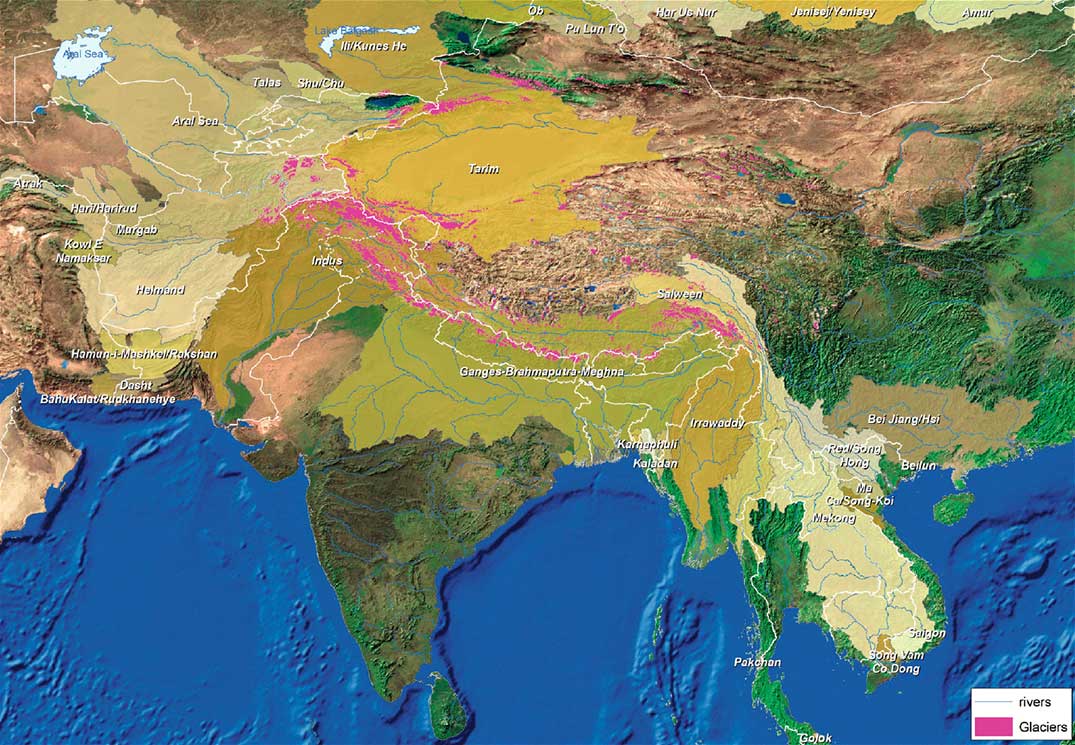
Climate change is affecting regional water availability around the world, especially in areas reliant on glacial meltwater. Rivers originating in the Hindu-Kush Himalayas are among the most meltwater-dependent systems, and the source of ten large Asian river systems (Amu Darya, Brahmaputra, Ganges, Indus, Irrawaddy, Mekong, Salween, Tarim, Yangtse, Yellow), providing water for 20 per cent of the world’s population (UNEP 2016b, p. 81) (Figure 9.7).
Tropical glaciers in the Andes account for more than 80 per cent of available freshwater for downstream populations and ecosystems in Latin American semi-arid tropic regions (UNEP 2013, p. 1). These are melting at an accelerating rate attributed to climate change (Chevallier et al. 2011; Rabatel et al. 2013), raising concerns about sustainable water supplies (Figure 9.8). Glacial retreat in the European Alps has accelerated over the last two decades (Huss 2012, p. 1132), while Central Asian glaciers have lost 27 per cent of their mass and 18 per cent of their area (Farinotti et al. 2015, p. 720; Yao et al. 2012).